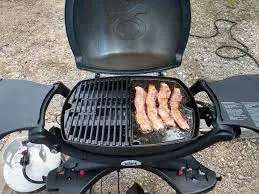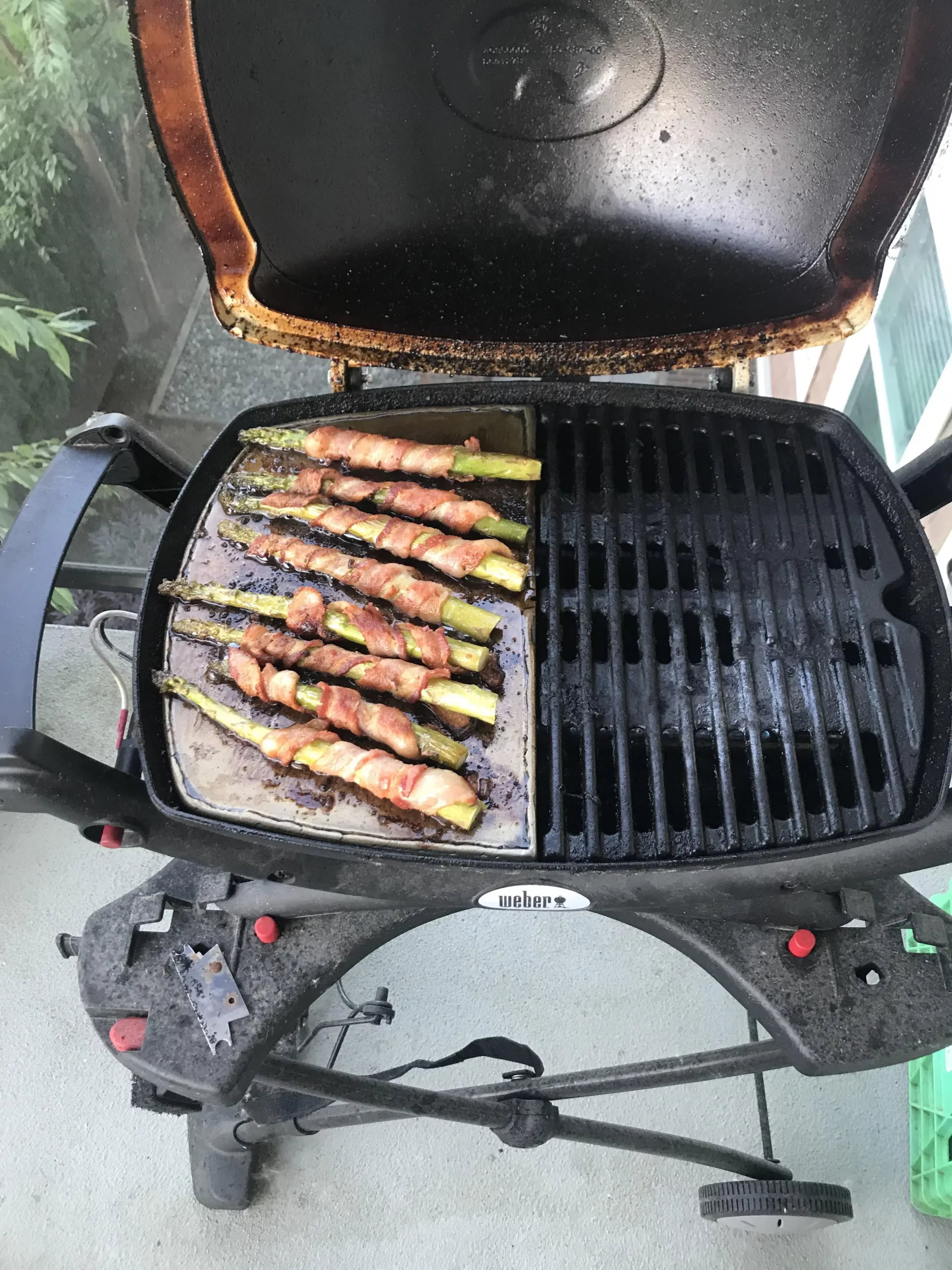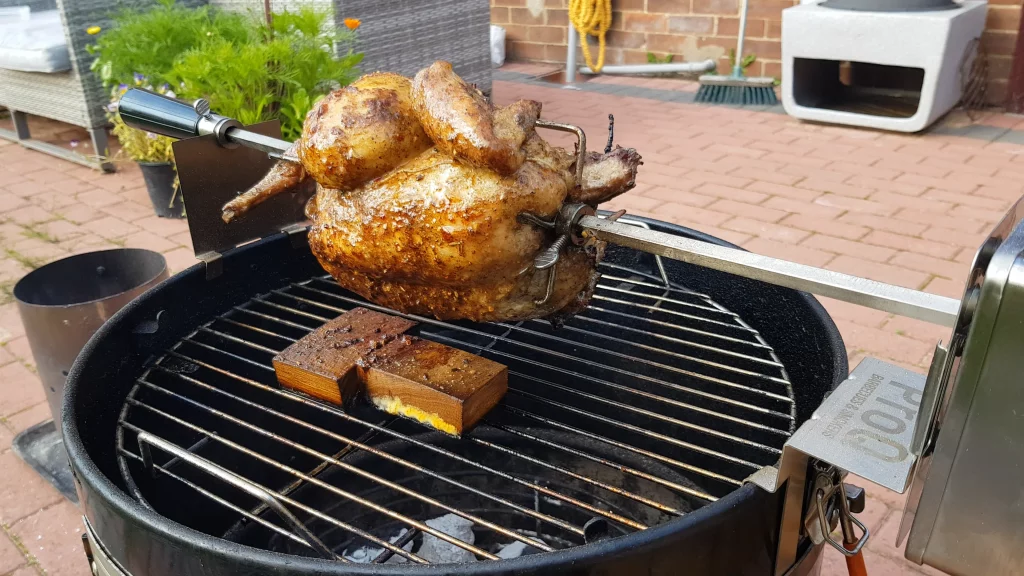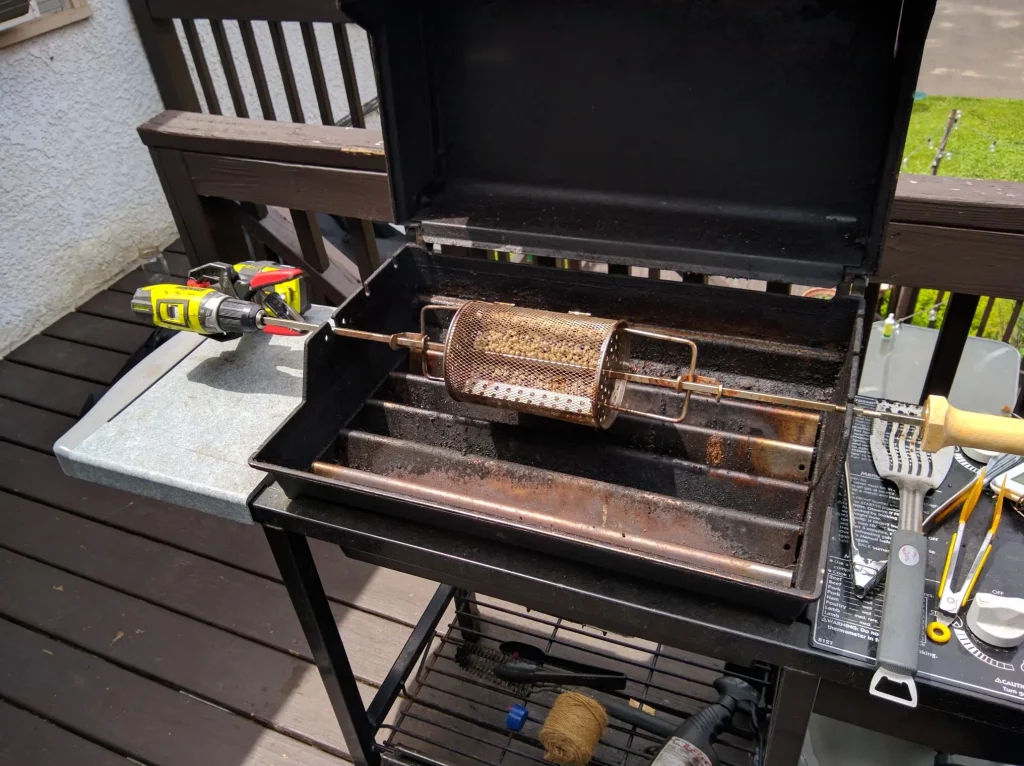COOKING ON CHARCOAL
Cooking on charcoal is an art that many barbecue enthusiasts and chefs deeply appreciate. The allure of charcoal cooking lies in the distinct flavor it imparts to food and the mastery required to control the heat. Charcoal grilling is not just a cooking method; it’s a culinary tradition that brings a unique taste and experience. From grilling to roasting and baking, charcoal offers versatility and a touch of authenticity that many cooking enthusiasts seek.
Grill
Grilling on charcoal is perhaps the most popular method of charcoal cooking. It involves cooking food directly over the hot coals. This method is perfect for foods that cook quickly, like steaks, burgers, sausages, chicken breasts, vegetables, and fish. The high heat from the charcoal sears the outside of the food, creating a crispy, caramelized exterior while keeping the inside juicy and flavorful. The key to successful charcoal grilling is managing the heat. This is done by controlling the airflow in the grill (using vents or dampers) and by how the coals are arranged. Direct grilling over the coals provides high heat for searing, while arranging the coals to one side offers a cooler area for slower cooking.
Roast/Bake
Charcoal can also be used for roasting or baking, which involves cooking food more slowly, using indirect heat. This method is ideal for larger cuts of meat, whole poultry, or for baked goods like pizzas and bread. In charcoal roasting, the food is not placed directly over the coals but off to the side or surrounded by coals. The lid of the grill is closed to create an oven-like environment, with the heat circulating around the food. This method cooks the food evenly and gently, resulting in tender, flavorful dishes. Monitoring the temperature inside the grill is crucial for successful roasting or baking with charcoal to ensure consistent cooking conditions.
50/50
The 50/50 method is a versatile approach to charcoal cooking, combining both direct and indirect heat. This technique involves dividing the grill into two zones: one with hot coals for direct grilling and the other without coals for indirect cooking. The 50/50 method allows for great flexibility – you can sear food over the hot coals and then move it to the cooler side to finish cooking more slowly. This is especially useful for foods that need a crispy exterior but require a longer cooking time to be done inside, like thick steaks, whole chickens, or roasts. It offers the best of both grilling worlds, allowing for a wide range of culinary creativity.
In conclusion, cooking on charcoal offers a delightful array of options, each with its unique appeal and technique. Whether it’s the direct heat of grilling, the slow and even roast of indirect cooking, or the combined approach of the 50/50 method, charcoal cooking is an art that imparts distinct flavors and a sense of tradition to meals, making it a cherished method for many cooking enthusiasts.
COOKING ON A GAS BBQ
Cooking on a gas BBQ is a popular choice for many due to its convenience and control. Gas grills provide a cleaner and more controlled cooking environment compared to charcoal, with the added benefit of easier temperature management and quicker start-up times. Gas BBQs are versatile, allowing for a variety of cooking methods, including grilling, roasting, and baking. The ability to control the heat with the turn of a knob makes gas BBQs a preferred option for those who value ease and consistency in their cooking.
Grill
Grilling on a gas BBQ is straightforward and convenient, making it perfect for everyday cooking. Gas grills heat up quickly and offer precise control over the cooking temperature, which is ideal for foods that require specific heat levels. This method is great for grilling steaks, burgers, hot dogs, fish, and vegetables. The direct heat from the burners provides a good sear on the food, locking in flavors and juices. Many gas grills come with multiple burners, allowing for different heat zones on the grill – a high heat zone for searing and a lower heat zone for slower grilling.
Roast/Bake
Roasting or baking on a gas BBQ can be an excellent way to prepare larger cuts of meat, whole poultry, or even baked goods like pizza and bread. To roast or bake on a gas grill, the food is typically cooked with indirect heat. This is achieved by turning on one or more burners to create a hot side and leaving other burners off or on low to create a cooler side. The food is placed on the cooler side, and the lid is closed to trap the heat, mimicking an oven environment. This method allows for even cooking and is ideal for dishes that require longer cooking times.
50/50
The 50/50 method on a gas BBQ combines the techniques of direct and indirect cooking. By adjusting the burners, you can create a hot zone for direct grilling and a cooler zone for indirect cooking. This method is particularly useful for cooking items that need a sear on the outside but require a longer cooking time to finish, like thick cuts of meat or whole birds. Start by searing the food on the hot side of the grill, then move it to the cooler side to cook through without burning. This technique provides flexibility and allows for a range of culinary possibilities on a gas BBQ.
In conclusion, cooking on a gas BBQ offers a blend of convenience and versatility. Whether you’re grilling up a quick meal, slowly roasting a large cut of meat, or employing the 50/50 method for varied cooking needs, a gas BBQ can accommodate a wide range of cooking styles. The ease of temperature control and quick heating times make gas BBQs a popular choice for those who enjoy outdoor cooking with minimal fuss.
COOKING ON Q
Cooking on a Weber Q Series Grill offers a blend of convenience and versatility, suitable for a variety of cooking styles. The Weber Q grills, known for their compact design and efficient heating, are popular among those who enjoy grilling but have limited space or prefer a portable option. Whether you own a smaller model like the Q1000, 1200, 2200, or a larger model like the Q3200, these grills are designed to deliver excellent cooking results, from grilling to roasting and baking.
Grill

Grilling on a Weber Q grill is an enjoyable experience due to the grill’s efficient design and ease of use. These grills heat up quickly and maintain a consistent temperature, ideal for classic grilling. The grates on the Q grills are designed to distribute heat evenly, ensuring well-cooked food with those desirable grill marks. These grills are great for cooking steaks, burgers, chicken, seafood, and vegetables. The control knobs allow for precise temperature adjustment, making it easier to manage the cooking process. For models with multiple burners, like the Q3200, you can create different heat zones, allowing for both direct and indirect grilling.
Roast/Bake WEBER For Q1000, 1200 & 2200 models
Roasting or baking on the smaller Weber Q models, such as the Q1000, 1200, and 2200, can be achieved by using indirect heat. This is done by using a Weber Q Roasting Shield and a roasting rack. The shield helps to deflect the heat, allowing for a more oven-like environment within the grill. With the lid closed, the heat circulates around the food, making it possible to roast larger cuts of meat or bake items like pizzas and bread. It’s important to monitor the temperature and adjust the burner settings as needed to maintain a steady cooking environment.

Roast/Bake WEBER For Q3200 models

The larger Q3200 models offer more space and flexibility for roasting and baking. These grills are equipped with multiple burners, which can be used to create distinct cooking zones. For roasting or baking, you can turn on one burner to high and leave the other off, placing the food on the cooler side of the grill. This indirect cooking method allows for even roasting and baking, suitable for larger cuts of meat, whole poultry, and even desserts. The Q3200’s larger cooking surface and better heat distribution capabilities make it ideal for those who wish to explore more diverse cooking techniques on their grill.
In conclusion, the Weber Q Series Grills offer a range of cooking options, accommodating everything from basic grilling to more complex roasting and baking. Whether you have a compact model like the Q1000, 1200, or 2200, or the more spacious Q3200, these grills are designed to provide a satisfying cooking experience. Their ease of use, combined with the ability to control the cooking temperature precisely, makes them a favorite among both casual grillers and seasoned barbecue enthusiasts.
Cooking on WEBER Pulse
Cooking on a Weber Pulse grill represents a modern take on traditional grilling, blending the convenience of electric operation with advanced features and design. The Weber Pulse series, which includes models like the Pulse 1000 and Pulse 2000, is particularly suitable for urban dwellers or those with limited outdoor space. These grills offer precise temperature control and are equipped with smart technology, making them a popular choice for those who prefer a modern, hassle-free grilling experience.
WEBER Pulse 1000 Direct Grilling
Direct grilling on the Weber Pulse 1000 is a straightforward and efficient process. This grill model is designed for smaller spaces and is ideal for cooking smaller meals. The direct grilling method involves cooking food directly over the heat source, providing quick cooking times and the ability to achieve a good sear on meats and vegetables. The Pulse 1000 heats up quickly and offers consistent temperature control, which is key for successful direct grilling. Its compact size makes it easy to manage and perfect for quick, everyday grilling tasks like preparing burgers, steaks, chicken breasts, or grilled vegetables.
WEBER Pulse 2000 Direct Grilling
The Weber Pulse 2000 model, being larger and more versatile than the Pulse 1000, offers greater flexibility for direct grilling. This model is equipped with more power and a larger grilling area, making it suitable for cooking larger meals or entertaining guests. Direct grilling on the Pulse 2000 allows for cooking a variety of foods at high heat, ensuring a delicious char and flavor. The grill’s precise temperature control and even heat distribution are advantageous for cooking thicker cuts of meat, seafood, and larger vegetable portions. The Pulse 2000’s advanced features, like its integrated iGrill technology, make monitoring the cooking process even more convenient, ensuring perfectly grilled results every time.
WEBER Pulse 2000 Indirect Grilling
Indirect grilling on the Weber Pulse 2000 opens up a whole new range of cooking possibilities. This method involves cooking food away from the direct heat source, allowing for slower cooking times and making it ideal for larger or tougher cuts of meat that need to be cooked through without burning. The Pulse 2000’s design and size make it well-suited for this cooking method. By using only one side of the grill’s heating elements or setting different temperatures on each side, you can create a zone of indirect heat. This is perfect for roasting whole chickens, larger roasts, or even baking pizza and bread. The indirect grilling method transforms the Pulse 2000 into a versatile outdoor oven, capable of handling a variety of culinary tasks beyond traditional grilling.
In conclusion, the Weber Pulse series, with models like the Pulse 1000 and 2000, offers a modern, electric alternative to traditional grilling. Whether you’re directly grilling smaller meals on the Pulse 1000 or taking advantage of the larger capacity and versatility of the Pulse 2000 for both direct and indirect grilling, these grills provide a convenient and precise way to cook a wide array of dishes. Their smart features and efficient design make them a great choice for modern home cooks looking to explore different grilling techniques.
COOKING ON Weber Smokey Mountain Cooker
Cooking on the Weber Smokey Mountain Cooker epitomizes the traditional smoking experience. Renowned for its ability to maintain low and steady temperatures, this smoker is perfect for slow-cooking meats to perfection. The Smokey Mountain Cooker comes in various sizes and is ideal for smoking everything from briskets and ribs to poultry and fish. Its vertical design, with a water pan between the coals and the cooking grates, helps maintain an even temperature and adds moisture to the smoke, enhancing the flavor and tenderness of the meat. This smoker is a favorite among barbecue enthusiasts who appreciate the nuanced flavors that only a dedicated smoker can provide.
BARBECUING ON ROTISSERIE
Barbecuing on a rotisserie is a method that offers even cooking and self-basting, resulting in juicy, flavorful meats. Rotisserie cooking involves slowly roasting meat on a rotating spit, exposing it to indirect heat. The rotation ensures that the meat cooks evenly on all sides and bastes in its own juices, producing succulent and tender results. This method is excellent for whole chickens, roasts, and even vegetables, giving them a distinct flavor and texture that’s hard to achieve with other cooking methods.
Using the Charcoal Rotisserie

Using a charcoal rotisserie combines the flavor of charcoal grilling with the even cooking of rotisserie-style roasting. When using a charcoal grill, the coals are usually arranged around the perimeter of the grill or in a basket behind the spit to provide indirect heat. The meat is skewered on the spit, which is then placed over the grill. As the spit rotates, the meat cooks evenly, absorbing the smoky flavors from the charcoal. This method requires careful attention to maintain a consistent temperature, but the results are well worth the effort.
Using the Q Rotisserie
The Q rotisserie, designed for use with Weber’s Q series grills, provides a convenient and effective way to rotisserie cook on a smaller scale. The compact design of the Q grill, combined with a rotisserie attachment, makes it perfect for smaller cuts of meat or for those with limited outdoor space. The Q rotisserie typically runs on electricity and is easy to set up and use. It offers a hassle-free way to achieve evenly cooked, flavorful meats without the need for constant monitoring.

Using the Gas Rotisserie

Using a gas rotisserie involves a gas grill equipped with a rotisserie attachment. This method is arguably the most convenient, offering precise temperature control and consistent heat. The rotisserie attachment usually includes a motorized spit that rotates the meat in front of the gas burners. This method is great for those who prefer a cleaner, more controlled grilling environment but still want the benefits of rotisserie cooking. Gas grills often provide more space, making them suitable for larger cuts of meat or for cooking multiple items simultaneously.
In conclusion, whether you’re smoking on a Weber Smokey Mountain Cooker or using a rotisserie with charcoal, a Weber Q, or a gas grill, each method offers unique benefits and flavors. Smoking provides that classic barbecue taste, while rotisserie cooking ensures even, juicy results. The choice depends on the desired flavor, the type of meat, and personal preference in the cooking process.